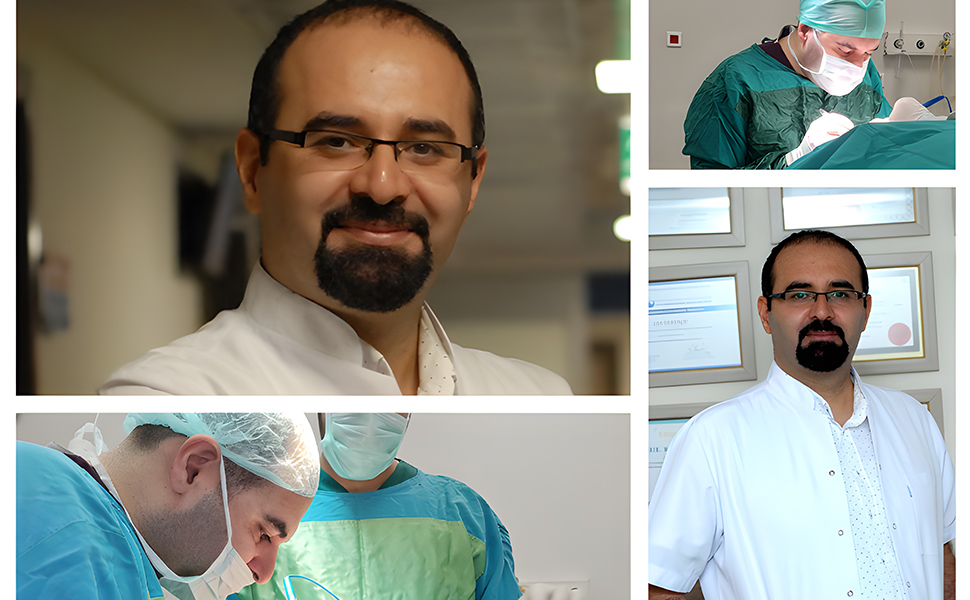
Microphthalmia and anophthalmiaThese are two distinct congenital disorders that affect the development of the eye. These disorders can have serious effects on the visual abilities and facial aesthetics of affected individuals. Here's what you need to know about these two conditions.
MicrophthalmiaIt describes the condition in which one or both eyes develop smaller than normal. It occurs as a result of abnormalities that occur in the early stages of eye development. It can occur in varying degrees; in some cases, the eye is slightly undersized, while in others, it can be much smaller.
AnophthalmiaIt is a condition in which one or both eyes are completely missing at birth. While there is usually some tissue in the eye socket, a fully developed eye is not present. AnophthalmiaIt is less common than microphthalmia.
Genetic factors, infections, drugs or radiation that the mother is exposed to during pregnancy, some syndromes and metabolic disorders may be effective in the formation of both conditions.

Diagnosis of anophthalmia and microphthalmiaIt can usually be diagnosed immediately after birth through a physical examination. However, various methods and tests can be used for a detailed evaluation and accurate diagnosis. anophthalmia and microphthalmia Main methods used in diagnosis:
Eye abnormalities in babies may be noticed during routine checkups immediately after birth. In case of anophthalmia when the eye is completely missing, microphthalmia the eye is abnormally small.
Ultrasound can be used to evaluate the eye and surrounding structures. Ultrasound uses sound waves to create images of tissues inside the body. Anophthalmia or microphthalmia In infants with suspected eye disease, ultrasound may be used to identify structural abnormalities of the eye.
MRIIt uses powerful magnets and radio waves to create detailed images of body tissues without the use of radiation. An MRI may be used for a more detailed evaluation of the eye and surrounding tissues.
Anophthalmia and microphthalmiaIt may occur due to genetic factors. Once family history and other risk factors are taken into account, genetic testing can help confirm the diagnosis.
Amniocentesis is usually performed between weeks 15 and 20 of pregnancy. During this test, a sample of amniotic fluid is collected from the uterus using ultrasound. This fluid contains the fetal DNA and can help identify genetic disorders, chromosomal abnormalities, or infections.
This test is usually performed between weeks 10 and 13 of pregnancy. Genetic testing is performed by taking cell samples from the placenta.

Both microphthalmia as well as anophthalmia There is no definitive treatment for this condition. However, there are various treatment methods available for aesthetic and functional support:
Prosthetic Eye: It cannot restore the function of the eye, but it provides an aesthetic appearance. Especially anophthalmia, to create a natural eye look prosthetic eye is used. Microphthalmia In this case, a prosthesis can be used to fill the eye socket and give it a natural appearance.
Orbital Surgery: Surgical procedures can be performed to correct the size and shape of the eye socket. Surgical expansion procedures, especially in infants with microphthalmia, can be used to maintain facial symmetry when started at an early age.
Conformers: These are plastic or silicone materials used before a prosthetic eye. They are used to widen the eye socket and prepare it for the prosthesis.
Rehabilitation: Microphthalmia In some cases, specialized rehabilitation programs may be used to support and maximize remaining vision. This may include vision therapy and the use of adaptive equipment.
Psychosocial Support: Eye developmental disorders can impact an individual's psychosocial development. Psychological support, counseling, and therapy can help individuals and their families cope with these challenges.
Microphthalmia and anophthalmiaare congenital conditions that cause both aesthetic and functional difficulties for individuals. Diagnosing anophthalmia and microphthalmiais critical for proper treatment and referral. If you are looking for more information or support on this topic, You can contact us and get information and support.







